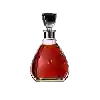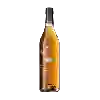
MJG BRIU - Domaine de VézianAdrien Banyuls Blanc Doux Naturel
This wine generally goes well with poultry, rich fish (salmon, tuna etc) or shellfish.
Food and wine pairings with Adrien Banyuls Blanc Doux Naturel
Pairings that work perfectly with Adrien Banyuls Blanc Doux Naturel
Original food and wine pairings with Adrien Banyuls Blanc Doux Naturel
The Adrien Banyuls Blanc Doux Naturel of MJG BRIU - Domaine de Vézian matches generally quite well with dishes of rich fish (salmon, tuna etc), shellfish or poultry such as recipes of coulibiac of salmon, navarin of the sea da gigi or north welsch.
Details and technical informations about MJG BRIU - Domaine de Vézian's Adrien Banyuls Blanc Doux Naturel.
Discover the grape variety: Koshu
One of the oldest varieties cultivated in Japan, generally in arbors/pergolas, most often used as a table grape and recently vinified and associated with other varieties. It is a Vitis vinifera also known in Australia, New Zealand, Germany, the United States... practically unknown in France.
Informations about the MJG BRIU - Domaine de Vézian
The MJG BRIU - Domaine de Vézian is one of of the world's great estates. It offers 77 wines for sale in the of Banyuls to come and discover on site or to buy online.
The wine region of Banyuls
Banyuls wines come from the South-eastern Part of Roussillon, in the south of France, in the lower Pyrenees, a few kilometres from the Spanish border. These naturally Sweet wines are consumed both as an aperitif and as a dessert. They come in a wide range of hues, from GoldenGreen (Banyuls Blanc) to Amber (Banyuls Ambré) to the intense garnet of the standard Banyuls Rouge. Unusually among the natural sweet wines of France, all Banyuls wines are made primarily from Grenache grapes of various colors.
The wine region of Languedoc-Roussillon
Languedoc (formerly Coteaux du Languedoc) is a key appellation used in the Languedoc-Roussillon wine region of southern France. It covers Dry table wines of all three colors (red, white and rosé) from the entire region, but leaves Sweet and Sparkling wines to other more specialized appellations. About 75% of all Languedoc wines are red, with the remaining 25% split roughly down the middle between whites and rosés. The appellation covers most of the Languedoc region and almost a third of all the vineyards in France.
The word of the wine: Friendly
Said of a wine whose aspects are pleasant and not too marked.














